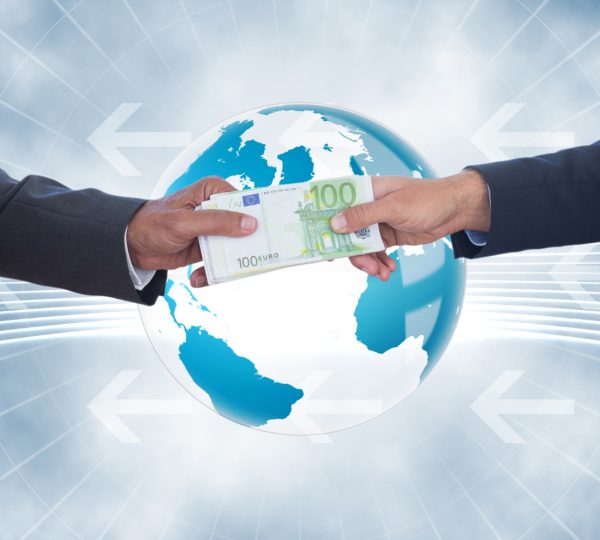Consider purchasing a vehicle. You will need a loan if you don’t have a sizable sum of money in your bank account. You will have to fund the purchase by taking out a loan.
Do you have to leave the dealership when this need arises and visit many banks, spending weeks looking for a financial institution to give a loan to? Not. Most of the finance processes are managed as part of the sales process. The salesman turns you over to the financial staff; they are often only a few steps or so down the hall.

This circumstance represents the core of embedded finance. The dealership simplifies the financing procedure to make it easier for you to buy the automobile. The non-bank organization—the auto dealer or even the automaker—becomes the focal point for banking activity.
This procedure has become much more widespread with the development of fintech and banking as a service (or BaaS), going well beyond significant purchases like automobiles and appliances. Almost every firm may include embedded finance alternatives into their operations, with Buy Now, Pay Later providers, and other retail financing solutions vying with credit cards.
Why embedded finance has taken over worldwide?
Almost every business in the world is impacted by embedded finance, making it more straightforward for consumers to purchase from you. Retailers, tech firms, insurers, banks, and other financial institutions are thus competing to develop solutions that will make accessing economic goods more accessible than ever for you and your clients.
Embedded finance’s popularity has significantly altered how individuals do business. It can increase consumer satisfaction, simplify transactions, and open up new sources of income for your company.
What applications of embedded finance are there?
Now that you are familiar with the basics of embedded finance, it’s time to consider how this strategy can work for your company. In light of it, the following are some of the prevalent general use cases in the market:
Financing
Again, think about buying a vehicle. One of embedded finance’s main applications is financing. However, numerous ways exist, including well-known choices like Buy Now and Pay Later.
Leasing
Let’s continue discussing automobile purchasing for a while. Another feasible option for paying for a car is leasing. It may also provide your company with a practical integrated funding option, offering customers another means to buy your items on simple terms.
Insurance
When was the last time you purchased a mobile phone? Did you choose the extra warranty? If your phone is damaged, this insurance plan enables you to replace or repair it. It also functions as embedded finance in the eyes of the corporation.
Currency/Crypto
Many businesses provide a variety of payment options. They make money available in other currencies rather than just one (like the US dollar). This may include accepting cryptocurrency like Bitcoin.
What are the benefits of embedded finance?
Small companies must provide intuitive and connected digital experiences more than ever before to meet rising consumer expectations.
Start considering how your clients will pay for your goods and services. Can you help things go more quickly and easily for them? Customers’ experiences may be significantly enhanced by an easy-to-use online payment system, which can also speed up the payment of bills.
A brilliant starting point is to connect with Stripe or GoCardless and include a “Pay Now” button on your Xero invoice. Thanks to this, customers will find it very simple to pay on numerous devices since it allows individuals to pay the invoice for additional payment options, including Apple Pay.
Embedded finance is a crucial component of some of the most successful businesses.
Embedded finance has revolutionized business across all sectors. Companies utilize integrated finance to spur development, provide a smooth user experience, and open up new income sources in various industries, from retail to healthcare.
Only a few well-known brands, like these five, are utilizing embedded finance services to spur growth and create new possibilities. You may be familiar with the following:
Amazon:One of the first significant businesses to use embedded finance was Amazon, which used it to power its Amazon Pay service. Customers may use their Amazon account details to pay for products and services on other websites using Amazon Pay. Consumers can now check out more quickly and easily, and Amazon gains helpful information about what additional goods and services its consumers are interested in.
Uber: Uber has dominated the ride-sharing business by using integrated financing. Embedded finance drives the company’s dynamic pricing, where prices change according to demand. Since drivers are always in order and customers can always get a ride when they need one, Uber can react quickly to changes in direction.
Airbnb: Airbnb has leveraged integrated finance to establish itself as the leading marketplace for vacation rentals. For its hosts, the business provides a variety of payment alternatives, including the capacity to collect payments in several currencies. Due to its more excellent pricing and payment options flexibility than traditional hotel chains, Airbnb has a significant advantage over them.
Square: A provider of financial services, Square provides a variety of goods and services for companies, such as loans, point-of-sale systems, and payment processing. The firm has employed embedded financing to increase small companies access to its goods and services. For instance, Square’s Cash App users may make and receive payments without entering their bank account details.
Robinhood: A platform for commission-free stock trading, Robinhood uses integrated finance to draw in a new wave of investors. Thanks to its rapid deposit service, the business enables consumers to start trading immediately after depositing into their accounts. Plaid, an embedded finance firm that Robinhood purchased in 2019, powers this function.
Embedded finance: are you ready to accept it?
Because embedded finance is a rapidly changing field, you must comprehend it and be prepared to use any new financial services that may be made available. Options for “buy now, pay later” are the tip of the iceberg. Imagine your automobile paying for parking fines or your shopping cart using your credit card as you leave the store.
These frictionless financial transactions are anticipated to become standard for both consumers and small enterprises. How companies connect with consumers will undoubtedly alter, but it will take time.



